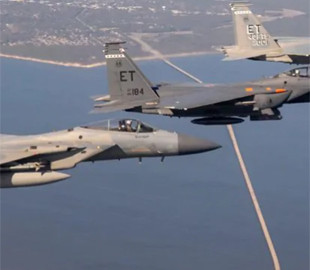
The latest version of the F-15EX is a radically modernized aircraft, in fact inside it is absolutely new board The Strike Eagle II fighter has only a visual part in common with the F-15E.
F-15 Eagle — it is one of the most effective fighters in the world, which has been produced for 50 years. The War Zone made a special issue about the Boeing aircraft.
Boeing is now producing the F-15EX Strike Eagle II fighter for the US Air Force — this is one of the most important boards. The latest upgrade offers features that many other platforms do not have.
“The physical size of this aircraft means that we can expand the computing power, and we can put new sensors, new pods and new weapons on board. So as the pace of technology continues to accelerate, as the adversary continues to evolve, the F-15 will remain on par or will overtake this pace for the US Air Force,” — said Rob Novotny, a former US Air Force officer and now Boeing's director of fighter development.
The first F-15A series rolled off the McDonnell Douglas production line in St. Louis 50 years ago. Then in November 1974 he was transferred to the 555th Tactical Training Squadron at Luke AFB. The first aerial victories of the F-15 were for the Israeli Air Force against Syrian MiGs in 1979.
The Eagle's effectiveness was revealed when it gained air superiority during Operation Desert Storm in 1991. when AIM-7 Sparrow missiles were used to strike Iraqi targets. The importance of the role of the F-15 was repeatedly revealed during operations. The latest such example is the repelling of an Iranian air attack on Israel on April 13. Then F-15E Strike Eagle intercepted enemy targets.
The versatility of the F-15 has led the US Air Force to effectively replace the F-111 Aardvark, as well as custom versions of the Strike Eagle for Saudi Arabia, Israel, Singapore and South Korea.
Boeing merged with McDonnell Douglas in 1997. At the same time, there were plans to improve the F-15 even more to get new customers. This is how the F-15QA (Qatar Advanced) and F-15SA (Saudi Advanced) versions appeared. They had advanced sensors and control systems. However, the last revolutionary milestone in development was the F-15EX Strike Eagle II.
The aircraft received a large display in the cockpit, in the helmet, an advanced AN/APG-82 AESA radar, an advanced on-board computer, updated communications and an advanced EPAWSS electronic warfare and surveillance system. The list goes on, but Novotny says that essentially the F-15EX — it's a new airplane.
“While it looks like the F-15 has looked for 50 years, you won't see the manufacturing improvements on the inside. A design that was almost perfected in the 1960s and '70s, the genetic culture , which permeates this platform, operators, fighters, technicians — we took all these lessons and put them into the development of what is the F-15EX, which is behind me. This aircraft is built on a foundation of combat excellence, maintainability and low maintenance costs”, — continues the Boeing representative.
Now the company's capacity allows to manufacture one and a half aircraft per month. Boeing is doing everything to speed up production and cut costs. Some of the aircraft parts are assembled using full-size deterministic assembly (FSDA) technology. Also, part of the production was returned from South Korea to the USA.

